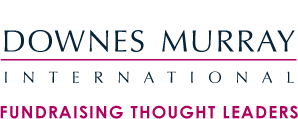
When donors and organisations with similar aims find each other, this partnership has the potential to result in positive impact and social justice. Amazing! But, somehow, this relationship – that should in theory be mutually beneficial and equal – is historically and currently burdened with power struggles and tension.
Those who hold the money can often be seen as having an upper hand, with non-profits having to ‘prove themselves’ to them and/or to pander to donors’ ideas when designing programmes.
Monitoring, evaluation and learning (MEL) is a brilliant strategic tool that can assist in maximising positive social impact and enabling more constructive relationships between donors and non-profits.
It’s common that non-profits promise to deliver ambitious impacts and outcomes in fundraising proposals. They receive money based on these promises.
Donors give money based on these promises. But so often, nobody’s checking on whether these outcomes are in fact being realised. Which is pretty irresponsible: if we do not know whether programmes are effective, the limited money available for these causes could be being wasted, or better spent elsewhere.
Also, good practices and lessons should be documented and shared. This need for documentation is particularly important in Africa, where much of the documented successes in programme design are still from the North, and do not meet our unique needs.
Most simply put: if we’re giving or receiving money that’s intended for benefitting a particular group of people, as the custodians of that money we should know that we’re having the most positive impact that we could with that money.
Used strategically, MEL helps non-profits to prove their worth (in terms of achievements and programme design) and improve their programme so that they maximise their positive social impact.
A good MEL system is founded on a theory of change – a model that helps us to understand what changes we wish to make in our context, and how these changes progress one from the other.
Once we understand our outcomes/desired changes (a theory of change), we can then align activities that will manifest these (a theory of action), identify indicators to make the outcomes measurable (if applicable) and figure out how to collect data that will help us to know whether or not we are achieving these outcomes (a monitoring and evaluation plan – M&E).
The technical business of setting up a M&E framework and system (as described above) is just the groundwork for really effective MEL. Once we have developed robust tools to collect the right data, we need to consider how we will use this data.
Most organisations plan and act, and some even monitor their work. It is the reflection and learning components that are the most vital.
A good MEL system will create reflection and learning points within the workflow of the organisation and its projects. Reflection and learning can be built into regular monthly meetings – brief reports of findings from the M&E data collected could be prepared prior to meetings and lessons discussed and then used to inform the way the work is conducted the next time.
Evidence should also be used to inform new strategic and operational plans, or new fundraising proposals.
How can MEL help us in our fundraising and with donor relations?
Here are some key reasons why MEL is essential for fundraising:
A good MEL system helps you to gather the right data, and to improve the impact of your work– you can know, show and grow your impact!
Jerushah Rangasami is the owner and director of Impact Consulting. Visit www.impactconsulting.co.za.

Like most modern websites, www.dmi.co.za places small files called 'cookies' on your computer to make your browsing experience as pleasant as possible. By entering this site you accept our Privacy Policy and Cookies Notice
If you’d prefer us not to use cookies, then please turn them off.
Close window and proceed to www.dmi.co.za